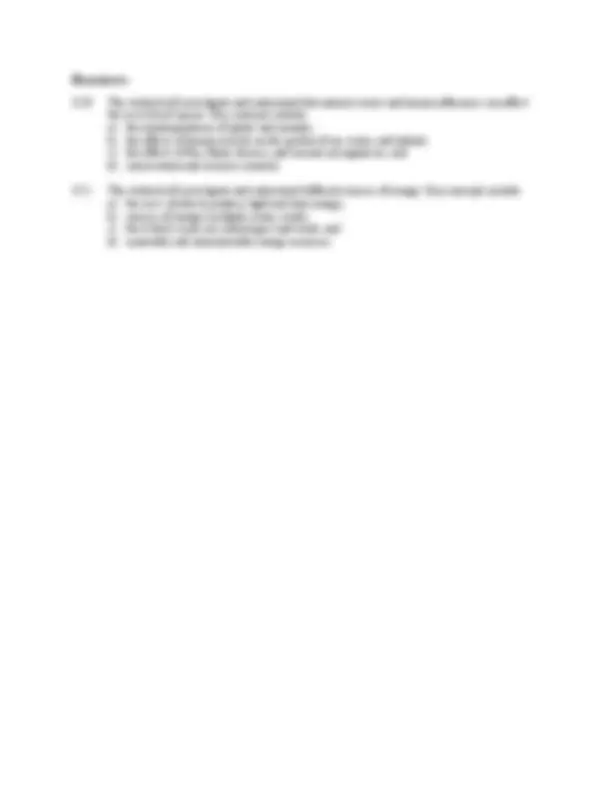




Study with the several resources on Docsity

Earn points by helping other students or get them with a premium plan


Prepare for your exams
Study with the several resources on Docsity

Earn points to download
Earn points by helping other students or get them with a premium plan
Community
Ask the community for help and clear up your study doubts
Discover the best universities in your country according to Docsity users
Free resources
Download our free guides on studying techniques, anxiety management strategies, and thesis advice from Docsity tutors
The science standards for third-grade students, focusing on conducting investigations, developing questions, formulating hypotheses, making predictions, and gathering data. Topics covered include simple and compound machines, energy, matter, behavioral and physical adaptations, living systems, and interrelationships in earth/space systems. Students are expected to measure volume, length, mass, temperature, and time, and make inferences and conclusions based on their findings.
Typology: Study notes
1 / 4

This page cannot be seen from the preview
Don't miss anything!



The third-grade standards place increasing emphasis on conducting investigations. Students are expected to be able to develop questions, formulate simple hypotheses, make predictions, gather data, and use the metric system with greater precision. Using information to make inferences and draw conclusions becomes more important. In the area of physical science, the standards focus on simple and compound machines, energy, and a basic understanding of matter. Behavioral and physical adaptations are examined in relation to the life needs of animals. The notion of living systems is further explored in aquatic and terrestrial food chains and diversity in environments. Patterns in the natural world are demonstrated in terms of the phases of the moon, tides, seasonal changes, the water cycle, and animal life cycles. Geological concepts are introduced through the investigation of the components of soil.
3.1 The student will plan and conduct investigations in which a) predictions and observations are made; b) objects with similar characteristics are classified into at least two sets and two subsets; c) questions are developed to formulate hypotheses; d) volume is measured to the nearest milliliter and liter; e) length is measured to the nearest centimeter; f) mass is measured to the nearest gram; g) data are gathered, charted, and graphed (line plot, picture graph, and bar graph); h) temperature is measured to the nearest degree Celsius; i) time is measured to the nearest minute; j) inferences are made and conclusions are drawn; and k) natural events are sequenced chronologically.
3.2 The student will investigate and understand simple machines and their uses. Key concepts include a) types of simple machines (lever, screw, pulley, wheel and axle, inclined plane, and wedge); b) how simple machines function; c) compound machines (scissors, wheelbarrow, and bicycle); and d) examples of simple and compound machines found in the school, home, and work environment.
3.3 The student will investigate and understand that objects are made of materials that can be described by their physical properties. Key concepts include a) objects are made of one or more materials; b) materials are composed of parts that are too small to be seen without magnification; and c) physical properties remain the same as the material is reduced in size.
3.4 The student will investigate and understand that behavioral and physical adaptations allow animals to respond to life needs. Key concepts include a) methods of gathering and storing food, finding shelter, defending themselves, and rearing young; and b) hibernation, migration, camouflage, mimicry, instinct, and learned behavior.
3.5 The student will investigate and understand relationships among organisms in aquatic and terrestrial food chains. Key concepts include a) producer, consumer, decomposer; b) herbivore, carnivore, omnivore; and c) predator and prey.
3.6 The student will investigate and understand that environments support a diversity of plants and animals that share limited resources. Key concepts include a) water-related environments (pond, marshland, swamp, stream, river, and ocean environments); b) dry-land environments (desert, grassland, rain forest, and forest environments); and c) population and community.
3.7 The student will investigate and understand the major components of soil, its origin, and importance to plants and animals including humans. Key concepts include a) soil provides the support and nutrients necessary for plant growth; b) topsoil is a natural product of subsoil and bedrock; c) rock, clay, silt, sand, and humus are components of soils; and d) soil is a natural resource and should be conserved.
3.8 The student will investigate and understand basic patterns and cycles occurring in nature. Key concepts include a) patterns of natural events (day and night, seasonal changes, phases of the moon, and tides); and b) animal and plant life cycles.
3.9 The student will investigate and understand the water cycle and its relationship to life on Earth. Key concepts include a) the energy from the sun drives the water cycle; b) processes involved in the water cycle (evaporation, condensation, precipitation); c) water is essential for living things; and d) water supply and water conservation.